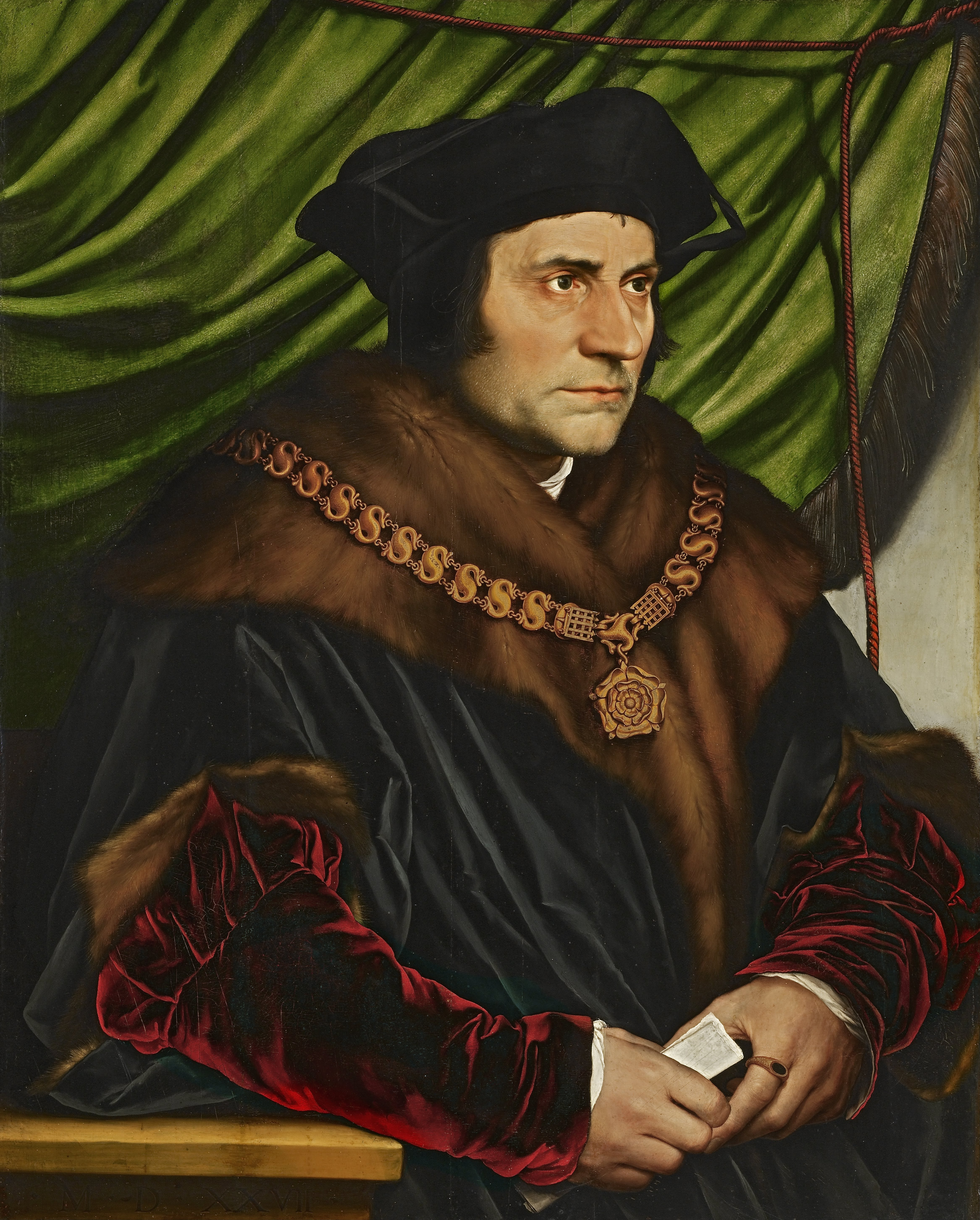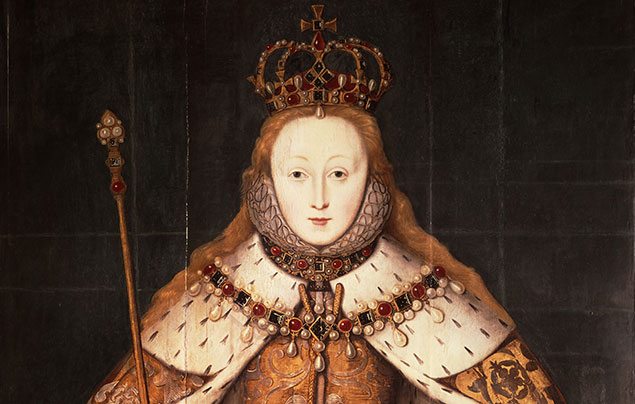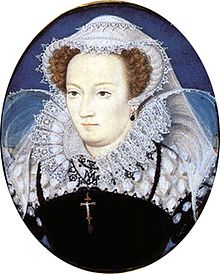Henry VIII (28 June 1491 – 28 January 1547) was King of England from 1509 until his death. Henry was the second Tudor monarch, succeeding his father, Henry VII. Henry is best known for his six marriages, in particular his efforts to have his first marriage, to Catherine of Aragon, annulled. His disagreement with the Pope on the question of such an annulment led Henry to initiate the English Reformation, separating the Church of Englandfrom papal authority. He appointed himself the Supreme Head of the Church of England and dissolved convents and monasteries, for which he was excommunicated. Henry is also known as «the father of the Royal Navy«; he invested heavily in the Navy, increasing its size greatly from a few to more than 50 ships.

Thomas More
Sir Thomas More (7 February 1478 – 6 July 1535), venerated in the Catholic Church as Saint Thomas More,[1][2] was an English lawyer, social philosopher, author, statesman, and noted Renaissance humanist. He was also a councillor to Henry VIII, and Lord High Chancellor of England from October 1529 to 16 May 1532.[3] He wrote Utopia, published in 1516, about the political system of an imaginary, ideal island nation.
More opposed the Protestant Reformation, in particular the theology of Martin Luther, Henry VIII, John Calvin and William Tyndale. More also opposed the king’s separation from the Catholic Church, refusing to acknowledge Henry as Supreme Head of the Church of England and the annulment of his marriage to Catherine of Aragon. After refusing to take the Oath of Supremacy, he was convicted of treason and executed. Of his execution, he was reported to have said: «I die the King’s good servant, but God’s first».

ELIZABETH I
Elizabeth I (7 September 1533 – 24 March 1603)[ was Queen of England and Ireland from 17 November 1558 until her death on 24 March 1603. Sometimes called The Virgin Queen, Gloriana or Good Queen Bess, Elizabeth was the last of the five monarchs of the House of Tudor.
Elizabeth was the daughter of Henry VIII and Anne Boleyn, his second wife, who was executed two-and-a-half years after Elizabeth’s birth. Anne’s marriage to Henry VIII was annulled, and Elizabeth was declared illegitimate. Her half-brother, Edward VI, ruled until his death in 1553, bequeathing the crown to Lady Jane Grey and ignoring the claims of his two half-sisters, Elizabeth and the Roman Catholic Mary, in spite of statute law to the contrary. Edward’s will was set aside and Mary became queen, deposing Lady Jane Grey. During Mary’s reign, Elizabeth was imprisoned for nearly a year on suspicion of supporting Protestant rebels.
In 1558 upon Mary’s death, Elizabeth succeeded her half-sister to the throne and set out to rule by good counsel.[ She depended heavily on a group of trusted advisers, led by William Cecil, 1st Baron Burghley. One of her first actions as queen was the establishment of an English Protestant church, of which she became the Supreme Governor. This Elizabethan Religious Settlement was to evolve into the Church of England. It was expected that Elizabeth would marry and produce an heir; however, despite numerous courtships, she never did. She was eventually succeeded by her first cousin twice removed, James VI of Scotland. She had earlier been responsible for the imprisonment and execution of James’s mother, Mary, Queen of Scots.
As she grew older, Elizabeth became celebrated for her virginity. A cult grew around her which was celebrated in the portraits, pageants, and literature of the day. Elizabeth’s reign became known as the Elizabethan era. The period is famous for the flourishing of English drama, led by playwrights such as William Shakespeare and Christopher Marlowe, and for the seafaring prowess of English adventurers such as Francis Drake.

MARY, QUEEN OF SCOTS
Mary, Queen of Scots (8 December 1542 – 8 February 1587), also known as Mary Stuart[ or Mary I of Scotland, reigned over Scotland from 14 December 1542 to 24 July 1567.
Mary, the only surviving legitimate child of King James V, was six days old when her father died and she acceded to the throne. She spent most of her childhood in France while Scotland was ruled by regents, and in 1558, she married the Dauphin of France, Francis. He ascended the French throne as King Francis II in 1559, and Mary briefly became queen consort of France, until his death in December 1560. Widowed, Mary returned to Scotland, arriving in Leith on 19 August 1561. Four years later, she married her first cousin, Henry Stuart, Lord Darnley and in June 1566 they had a son, James.
In February 1567, Darnley’s residence was destroyed by an explosion, and he was found murdered in the garden. James Hepburn, 4th Earl of Bothwell, was generally believed to have orchestrated Darnley’s death, but he was acquitted of the charge in April 1567, and the following month he married Mary. Following an uprising against the couple, Mary was imprisoned in Loch Leven Castle. On 24 July 1567 she was forced to abdicate in favour of her one-year-old son. After an unsuccessful attempt to regain the throne, she fled southwards seeking the protection of her first cousin once removed, Queen Elizabeth I of England. Mary had once claimed Elizabeth’s throne as her own, and was considered the legitimate sovereign of England by many English Catholics, including participants in a rebellion known as the Rising of the North. Perceiving her as a threat, Elizabeth had her confined in various castles and manor houses in the interior of England. After eighteen and a half years in custody, Mary was found guilty of plotting to assassinate Elizabeth in 1586. She was beheaded the following year at Fotheringhay Castle.
